|
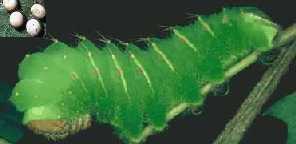
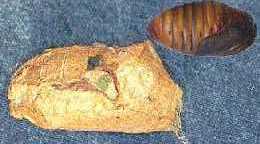
|
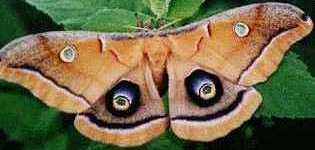
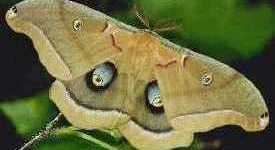
|
|
Antheraea polyphemus
Polyphemus Moth.
Hosts: wide variety of trees and shrubs including Quercus, Salix, Acer, and Betula.
Adults emerge in late afternoon, and mating occurs the same day late evening to early morning.
Females lay eggs that evening, singly or in groups of 2 or 3.
Caterpillars are solitary,
eat an entire leaf and then cut the leaf petiole at the base so it falls to the ground,
to eliminate signs of feeding.
The female moth pictured on the left has much smaller antennae than the male to the right,
the color differences are merely of variations within the species.
Adults do not feed.
|
|


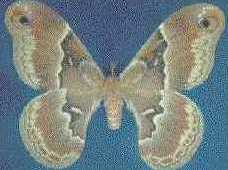
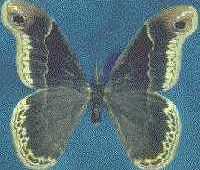
|
|
Callosamia promethea
Promethea Moth.
Hosts: broad range of plants including spicebush (Lindera benzoin), sassafras (Sassafras albidum),
tulip tree (Liriodendron tulipifera), white ash (Fraxinus americana),
lilac (Syringa vulgaris), and others.
Males seek females in afternoon and early evening.
At night, females lay rows of 4-10 eggs on upperside of host leaves.
Young caterpillars feed together; older caterpillars are solitary,
do not eat the leaf midvein, but cut the leaf petiole at the base so it falls to the ground,
eliminating signs of feeding.
Caterpillar ties a leaf petiole with silk and spins its cocoon inside the curled leaf,
hanging from host plant through the winter.
Adults pictured are: female, male.
Adults do not feed.
|
|


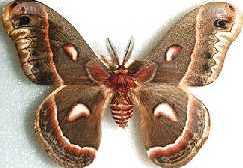
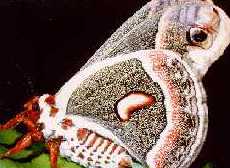
|
 Hyalophora cecropia
Cecropia Moth.
Hosts: Acer negundo, Acer saccharinum,
wild cherries and plums (Prunus), apples (Malus), alder and birch (Betulaceae),
dogwoods (Cornus), and willows (Salix).
Females lay rows of 2-6 eggs on both sides of the leaves of small host trees.
Young caterpillars feed in groups; older caterpillars are solitary.
Cocoon is attached along its full length to a twig, usually in a dark, protected area to escape rodents and birds.
Adults do not feed.
Hyalophora cecropia
Cecropia Moth.
Hosts: Acer negundo, Acer saccharinum,
wild cherries and plums (Prunus), apples (Malus), alder and birch (Betulaceae),
dogwoods (Cornus), and willows (Salix).
Females lay rows of 2-6 eggs on both sides of the leaves of small host trees.
Young caterpillars feed in groups; older caterpillars are solitary.
Cocoon is attached along its full length to a twig, usually in a dark, protected area to escape rodents and birds.
Adults do not feed.
|












 Hyalophora cecropia
Cecropia Moth.
Hosts: Acer negundo, Acer saccharinum,
wild cherries and plums (Prunus), apples (Malus), alder and birch (Betulaceae),
dogwoods (Cornus), and willows (Salix).
Females lay rows of 2-6 eggs on both sides of the leaves of small host trees.
Young caterpillars feed in groups; older caterpillars are solitary.
Cocoon is attached along its full length to a twig, usually in a dark, protected area to escape rodents and birds.
Adults do not feed.
Hyalophora cecropia
Cecropia Moth.
Hosts: Acer negundo, Acer saccharinum,
wild cherries and plums (Prunus), apples (Malus), alder and birch (Betulaceae),
dogwoods (Cornus), and willows (Salix).
Females lay rows of 2-6 eggs on both sides of the leaves of small host trees.
Young caterpillars feed in groups; older caterpillars are solitary.
Cocoon is attached along its full length to a twig, usually in a dark, protected area to escape rodents and birds.
Adults do not feed.